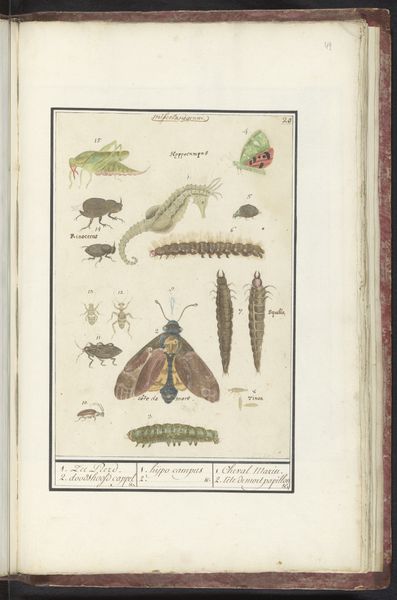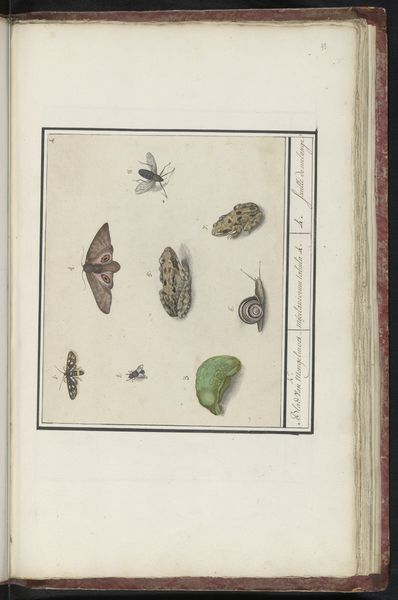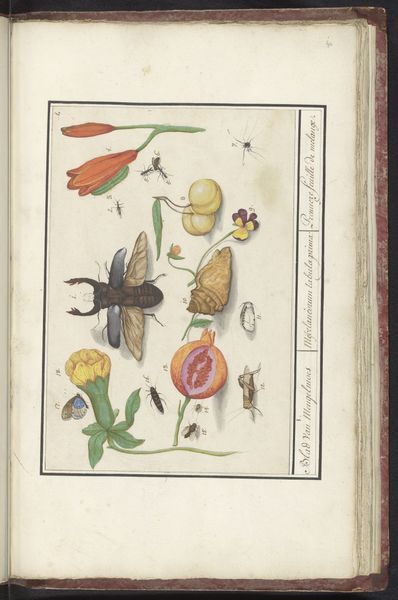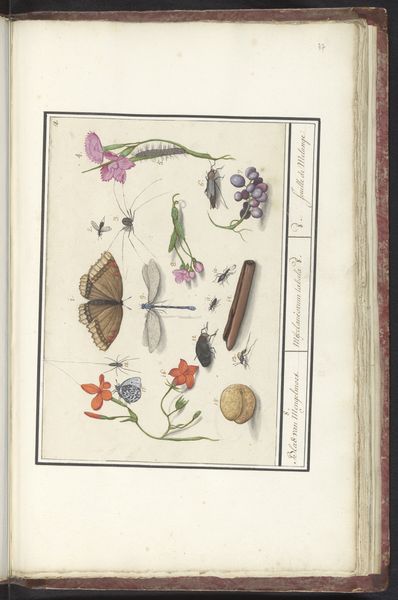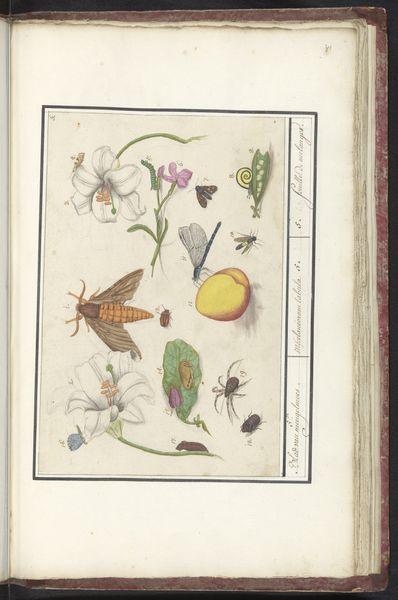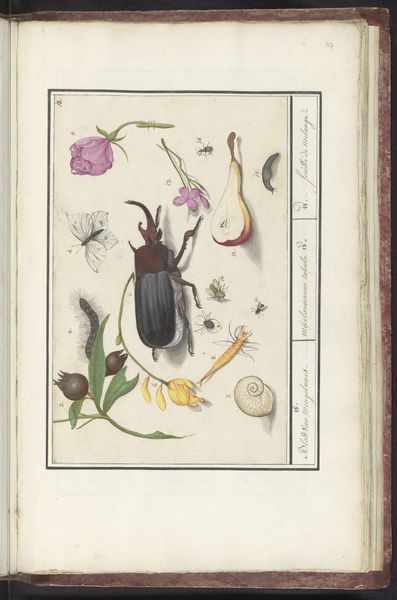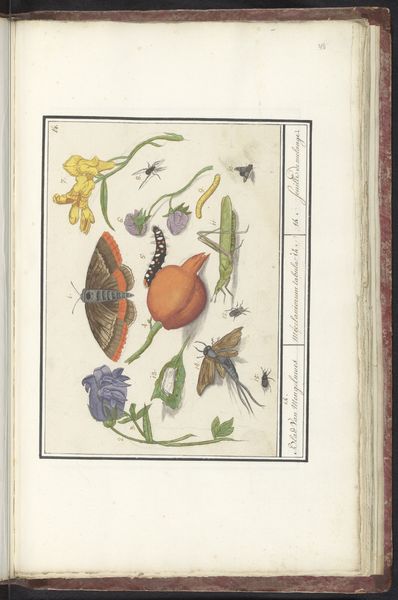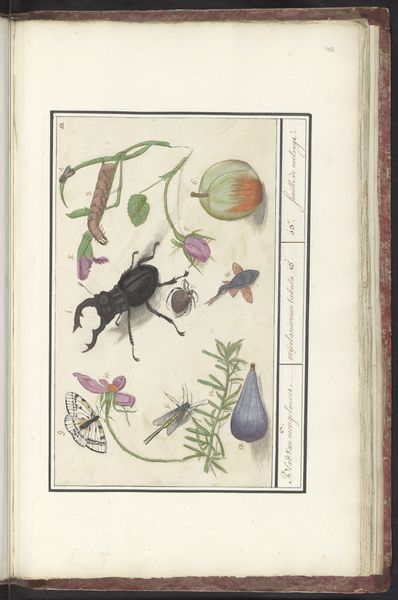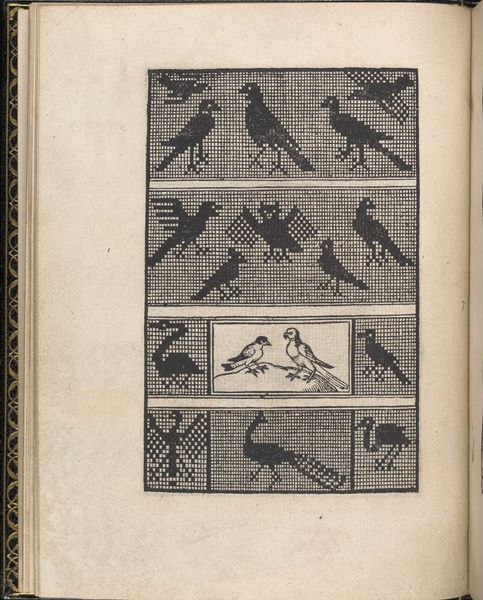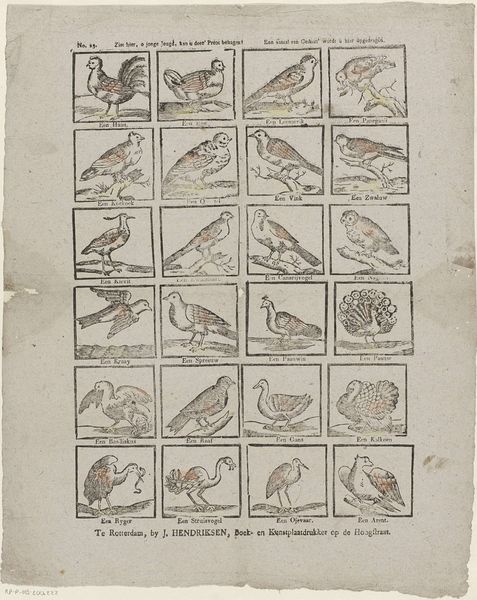
drawing, coloured-pencil, tempera, paper, ink
#
drawing
#
coloured-pencil
#
animal
#
tempera
#
paper
#
11_renaissance
#
ink
#
coloured pencil
#
northern-renaissance
Dimensions: height 301 mm, width 184 mm
Copyright: Rijks Museum: Open Domain
This is a page from a volume of watercolors of natural specimens by Elias Verhulst, made around the turn of the 17th century. It showcases the artist’s skills in rendering a wide range of animals, from crabs and fish to insects and birds. The image speaks to the early development of the science of natural history in the Netherlands. Verhulst was working at a time of increasing global trade and colonization, which brought Europeans into contact with exotic flora and fauna. This image embodies a cultural desire to classify and understand the natural world. The page’s composition is reminiscent of a scientific catalogue, with each specimen carefully depicted and labelled. The inclusion of both aquatic and terrestrial animals on a single page suggests a broad, encyclopedic approach to natural knowledge. To understand this image fully, one can consult period texts on natural history and explore Dutch colonial records to understand what ideas underpinned their classifications. By doing so, we begin to understand the place of art in the making of early modern science.
Comments
No comments
Be the first to comment and join the conversation on the ultimate creative platform.
